
Abbotsford is a historic country house in the Scottish Borders, near Galashiels, on the south bank of the River Tweed. Now open to the public, it was built as the residence of historical novelist and poet Sir Walter Scott between 1817 and 1825. It is a Category A Listed Building and the estate is listed in the Inventory of Gardens and Designed Landscapes in Scotland.

Sir Walter Scott, 1st Baronet, was a Scottish historian, novelist, poet, and playwright. Many of his works remain classics of European and Scottish literature, notably the novels Ivanhoe (1819), Rob Roy (1817), Waverley (1814), Old Mortality (1816), The Heart of Mid-Lothian (1818), and The Bride of Lammermoor (1819), along with the narrative poems Marmion (1808) and The Lady of the Lake (1810). He had a major impact on European and American literature.
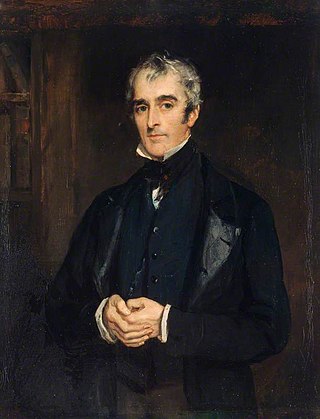
John Gibson Lockhart was a Scottish writer and editor. He is best known as the author of the seminal, and much-admired, seven-volume biography of his father-in-law Sir Walter Scott: Memoirs of the Life of Sir Walter Scott, Bart

Archibald David Constable was a Scottish publisher, bookseller and stationer.
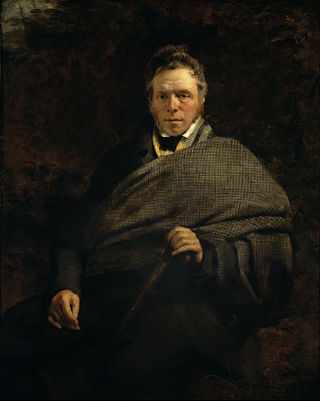
James Hogg was a Scottish poet, novelist and essayist who wrote in both Scots and English. As a young man he worked as a shepherd and farmhand, and was largely self-educated through reading. He was a friend of many of the great writers of his day, including Sir Walter Scott, of whom he later wrote an unauthorised biography. He became widely known as the "Ettrick Shepherd", a nickname under which some of his works were published, and the character name he was given in the widely read series Noctes Ambrosianae, published in Blackwood's Magazine. He is best known today for his novel The Private Memoirs and Confessions of a Justified Sinner. His other works include the long poem The Queen's Wake (1813), his collection of songs Jacobite Relics (1819), and his two novels The Three Perils of Man (1822), and The Three Perils of Woman (1823).
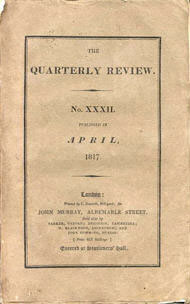
The Quarterly Review was a literary and political periodical founded in March 1809 by London publishing house John Murray. It ceased publication in 1967. It was referred to as The London Quarterly Review, as reprinted by Leonard Scott, for an American edition.

Jonathan Oldbuck is the leading character in Sir Walter Scott's 1816 novel The Antiquary. In accordance with Scottish custom he is often addressed by the name of his house, Monkbarns. He is devoted to the study and collection of old coins, books and archaeological relics, and has a marked tendency to misogyny due to disappointment in an early love affair. His characteristics have been traced back to several men known to Scott, and to the author himself, an enthusiastic antiquary. Many critics have considered him one of Scott's finest creations.
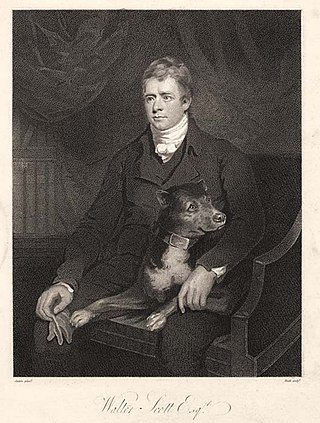
Minstrelsy of the Scottish Border is an anthology of Border ballads, together with some from north-east Scotland and a few modern literary ballads, edited by Walter Scott. It was first published by Archibald Constable in Edinburgh in 1802, but was expanded in several later editions, reaching its final state in 1830, two years before Scott's death. It includes many of the most famous Scottish ballads, such as Sir Patrick Spens, The Young Tamlane, The Twa Corbies, The Douglas Tragedy, Clerk Saunders, Kempion, The Wife of Usher's Well, The Cruel Sister, The Dæmon Lover, and Thomas the Rhymer. Scott enlisted the help of several collaborators, notably John Leyden, and found his ballads both by field research of his own and by consulting the manuscript collections of others. Controversially, in the editing of his texts he preferred literary quality over scholarly rigour, but Minstrelsy of the Scottish Border nevertheless attracted high praise from the first. It was influential both in Britain and on the Continent, and helped to decide the course of Scott's later career as a poet and novelist. In recent years it has been called "the most exciting collection of ballads ever to appear."

Lady Louisa Stuart was a British writer of the 18th and 19th centuries. Her long life spanned nearly ninety-four years.
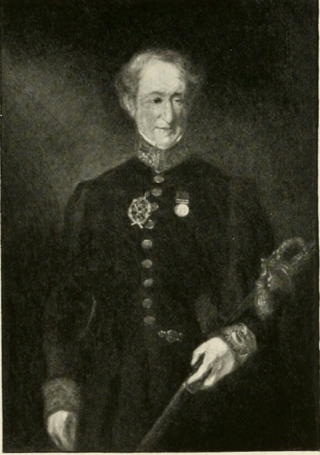
Sir Adam Ferguson (1770–1854) was deputy keeper of the regalia in Scotland.
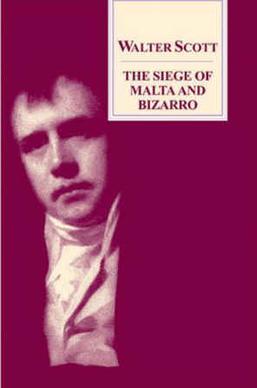
Bizarro is an unfinished novel or novella by Sir Walter Scott written in the spring of 1832 but not published until 2008. Scott came across the story of the brigand Francesco Moscato, known as "Il Bizarro", while he was travelling in Italy, trying to recruit his ruined health. It was told to him as true by an English apothecary, resident in Italy, whom Scott considered "a respectable authority".

The Siege of Malta is a historical novel by Walter Scott written from 1831 to 1832 and first published posthumously in 2008. It tells the story of events surrounding the Great Siege of Malta by the Ottoman Turks in 1565.
George Ritchie Kinloch was a Scottish lawyer, philanthropist and antiquarian best known today for publishing a collection of ballads.
The Doom of Devorgoil is a play by Sir Walter Scott, initially written in 1817 and 1818, and then reworked in 1829 and 1830 for publication in the spring of 1830, together with another work titled Auchindrane in an octavo volume. The play was one of Scott's few critical failures.

The Hon. Mary Monica Maxwell-Scott was a Scottish author of historical novels and non-fiction and the great-granddaughter of the novelist Walter Scott.
The Edinburgh Edition of the Waverley Novels by Walter Scott appeared in thirty volumes between 1993 and 2012. Published by Edinburgh University Press, it was the first complete critical edition of the novels.
Familiar Anecdotes of Sir Walter Scott, a memoir by James Hogg, was published in New York in 1834.

Letters on Demonology and Witchcraft Addressed to J. G. Lockhart, Esq. (1830) was a study of witchcraft and the supernatural by Sir Walter Scott. A lifelong student of folklore, Scott was able to draw on a wide-ranging collection of primary and secondary sources. His book found many readers throughout the 19th century, and exercised a significant influence in promoting the Victorian vogue for Gothic and ghostly fiction. Though on first publication it met with mixed reviews, it is now recognised as a pioneering work of scientific anthropology, treating of its subject in an acute and analytical way which prefigures later scholarship on the subject, as well as presenting a highly readable collection of supernatural anecdotes.
The letters of Sir Walter Scott, the novelist and poet, range in date from September 1788, when he was aged 17, to June 1832, a few weeks before his death. About 7000 letters from Scott are known, and about 6500 letters addressed to him. The major repository of both is the National Library of Scotland. H. J. C. Grierson's The Letters of Sir Walter Scott (1932–1937), though it includes only about 3500, remains the standard edition.
Walter Scott's "Memoirs", first published as "Memoir of the Early Life of Sir Walter Scott, Written by Himself" and also known as the Ashestiel fragment, is a short autobiographical work describing the author's ancestry, parentage, and life up to the age of 22. It is the most important source of information we have on Scott's early life. It was mainly written between 1808 and 1811, then revised and completed in 1826, and first published posthumously in 1837 as Chapter 1 of J. G. Lockhart's multi-volume Memoirs of the Life of Sir Walter Scott, Bart. It was re-edited in 1981 by David Hewitt.













